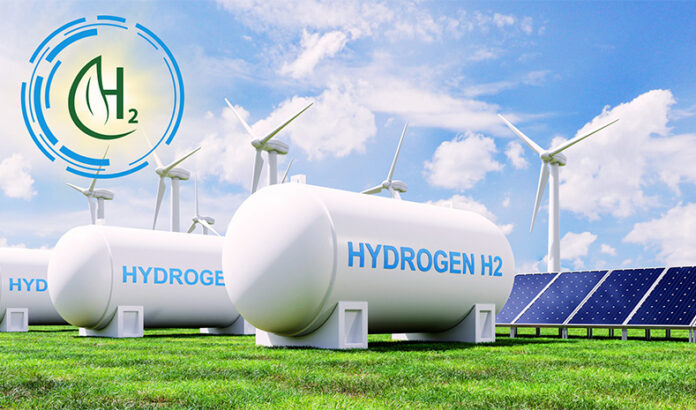09 Jun 2023
Green hydrogen technology companies have just been offered a boost to protect their innovations with patents.
The U.S. Patent and Trademark Office has expanded and extended the Climate Change Mitigation Pilot Program, which will give certain green technology patent applications special status and a fast track.
Green hydrogen technology companies may qualify for this program for any innovations designed to:
- Remove greenhouse gases already present in the atmosphere;
- Reduce and/or prevent additional greenhouse gas emissions; and/or
- Monitor, track, and/or verify greenhouse gas emission reductions.
Green hydrogen, produced through electrolysis using renewable energy sources like wind, solar, or hydro power, is getting a lot of attention as a promising solution for achieving sustainable energy and climate goals, and in decarbonizing various sectors.
With the USPTO’s program extension, these innovative solutions can get on the fast track to patent protection from now until June 7, 2027, or until the USPTO accepts 4,000 grantable petitions — whatever comes first.
To take advantage of the program successfully, it’s important to know the application process, how to focus patent applications, and how to choose the right legal representation.
Knowing What Can Be Patented and Where to Focus
Before diving into the patenting process, it helps to understand what can be protected through patents. Here are some of the types of inventions related to green hydrogen that could potentially be patented:
- Electrolysis Systems with advancements in cell designs, electrode materials, membranes, and electrocatalysts.
- Renewable Energy Integration such as hybrid systems, power management optimization, grid integration, and smart control systems.
- Hydrogen Storage and Distribution that includes new approaches such as innovative storage materials, high-density storage methods, and efficient transportation systems.
- Fuel Cells such as novel fuel cell designs, materials, and system architectures that improve efficiency, power output, and durability.
- Hydrogen Production Methods that utilize renewable resources and cover innovative approaches such as biological hydrogen production, photoelectrochemical water splitting, or thermochemical processes using renewable inputs.
Other innovations might also include Applications and End-Use Sectors, System Optimization and Control, Safety and Regulatory Compliance, and more.
Understanding the Patent Filing Options For Your Green Hydrogen Technology Invention
Once you know where to focus, it’s important to consider whether to file a provisional or non-provisional application.
A provisional patent application is an informal filing that gives you 12 months to file a formal non-provisional patent application, and is a great option for technologies with longer development timelines. The time between filing the provisional and non-provisional patents doesn’t count against the enforceable 20-year life of the patent, so you effectively extend your patent term by a year. That enables you to capture new developments in your innovation, which can be extremely valuable in a such a rapidly-developing field.
A non-provisional patent, on the other hand, is a formal patent application that must include a formal claim set and supporting documentation. Unlike a provisional patent application, the non-provisional patent application undergoes a full examination process by the patent office that can lead to the granting of a patent.
Learning the Necessary Steps to Maximize Success
The first step in the patent process is to contact a patent agent or attorney who is familiar with green hydrogen technology.
For example, I’m a patent agent with a PhD in electrical engineering specializing in nanomaterials for clean energy applications. I have research experience in cutting edge solar-driven water splitting, and have collaborated with leading experts in electrochemistry. I understand the complex and interdisciplinary nature of green hydrogen technologies and can help inventors to develop detailed explanations to satisfy patentability criteria. It’s important to have an expert on your side that speaks the proper technical language.
The second step is to strategize timing. Generally speaking, it’s best to file a patent application before sharing information outside your company — before discussions with customers, submitting a manuscript for publication, and so on.
The third is to know the prior art. Getting your patent application approved by the patent office depends on the patent examiner finding your invention to be “non-obvious” or “inventive” relative to the prior art. This is often the most difficult hurdle in the patent process, even for cutting-edge technologies like green hydrogen or electrolysis.
Finally, you’ll need to work with your patent attorney to draft your application strategically to avoid rejections and defend against challenges that competitors might bring after the patent has been issued.
This includes:
- Describing the technical problems the invention solves.
- Describing the technical steps that are used to solve the problem.
- For method inventions, describing specific hardware to implement the invention.
- Explaining the invention in the context of alternative green energy sources.
Understanding the Global Process as It Relates to Your Innovation
As the green hydrogen technology sector continues to expand globally, securing international patent protection is becoming increasingly significant.
Considerations during the process include understanding global initiatives, government policies, and private funding opportunities, such as the European Clean Hydrogen Alliance that aims to foster investment in clean hydrogen technologies, including renewable electrolysis.
The U.S. Department of Energy also has funding and grants for research and development in clean hydrogen technologies and draft guidance for a clean hydrogen production standard (CHPS), developed to meet the requirements of the infrastructure law.
Seeking the Right Legal Representation For Your Needs
Choosing the right law firm for patent-related matters is crucial for a successful patent prosecution process in green hydrogen technology. It’s best to choose a firm with legal and technical expertise in the technology, extensive experience working with all aspects of patent protection, and success collaborating with foreign associates when an innovation is being considered for international patent protection.
The team at Henry Patent Law Firm understands the complexity of patenting technology in the growing field of green hydrogen technology. We also understand how to navigate the USPTO’s patent approval process, and we have significant experience obtaining accelerated examination status for U.S. patent applications. Contact us today to find out how we can help.

Ke Sun, Ph.D.
Ke Sun, Ph.D., is a registered patent agent. He applies his expertise to preparing and prosecuting domestic and international patent applications.

